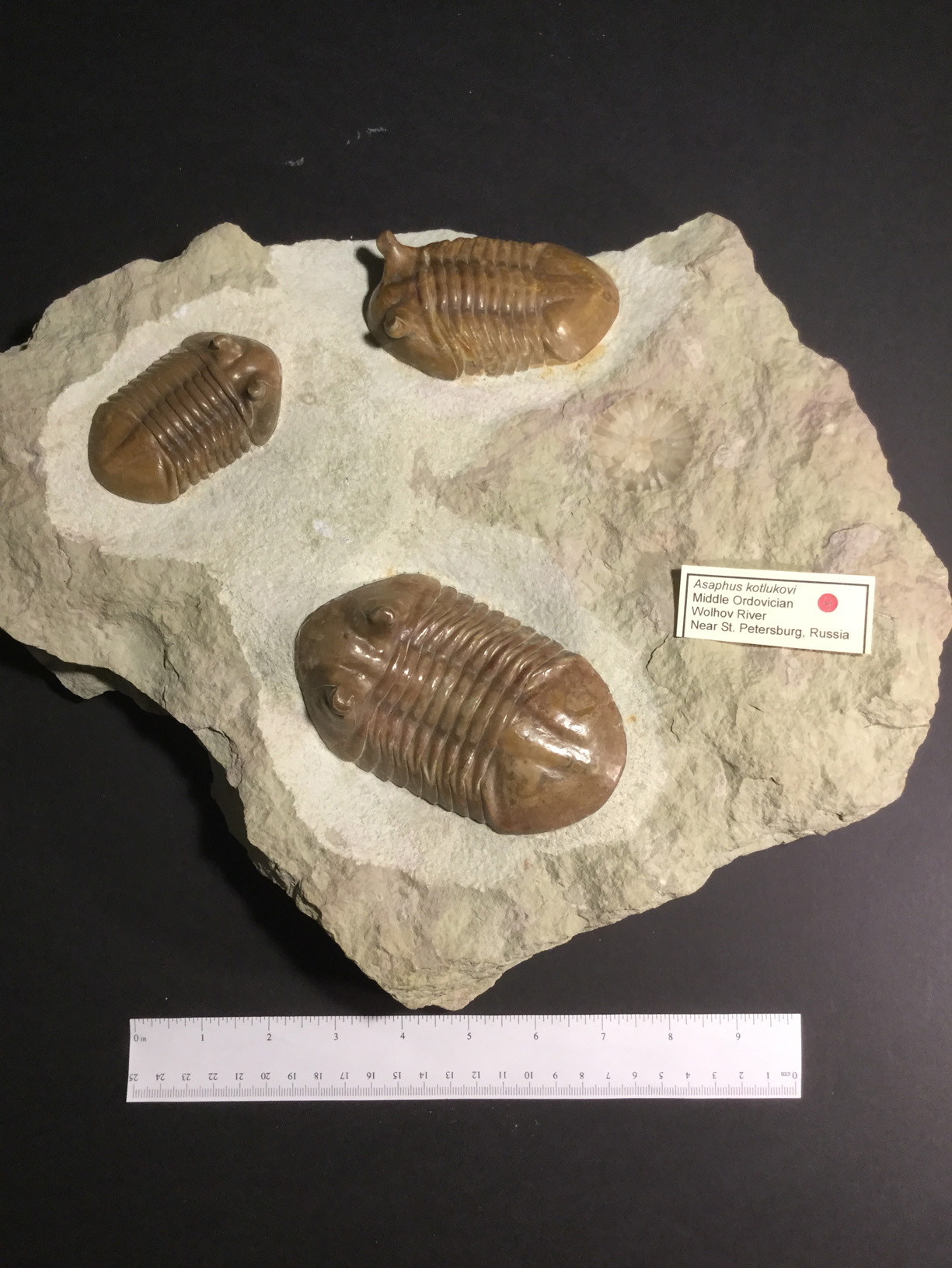
Ordovician Trilobite
Sorry, this item is no longer for sale
Asaphus kotlukovi
Middle Ordovician
Wolhov River
Near St. Petersburg, Russia
Sold to Charles and Linda Sternbach
Middle Ordovician
Wolhov River
Near St. Petersburg, Russia
Sold to Charles and Linda Sternbach
This example is a real museum quality specimen. The 10" x 14" slab of limestone is host to three excellent examples of the genera. The specimen is expertly prepared and the detail is splendid. The largest trilobite is 5 inches.
Asaphus kotlukovi is one of the 35 species of trilobite of the genus Asaphus. Fossils of this species are popular among collectors because of their prominent stalked eyes (termed "peduncles).
In the Ordovician period, an inland sea formed in what is now Eastern Europe. The sea contained a remarkably diverse trilobite fauna. Over a dozen species of Asaphus developed in this sea, with many species, including unrelated species, developing long eyestalks in various lengths. That so many species of trilobite developed eyestalks suggests that they were trying to overcome increased turbidity, or there was some sort of massive selective pressure leading these trilobites to bury themselves in the substrate up to their eyes. This species may have lain in wait buried in a benthic layer of loose debris or sediment with only its periscope eyestalks protruding above, looking out for danger or prey.
Asaphus kotlukovi is one of the 35 species of trilobite of the genus Asaphus. Fossils of this species are popular among collectors because of their prominent stalked eyes (termed "peduncles).
In the Ordovician period, an inland sea formed in what is now Eastern Europe. The sea contained a remarkably diverse trilobite fauna. Over a dozen species of Asaphus developed in this sea, with many species, including unrelated species, developing long eyestalks in various lengths. That so many species of trilobite developed eyestalks suggests that they were trying to overcome increased turbidity, or there was some sort of massive selective pressure leading these trilobites to bury themselves in the substrate up to their eyes. This species may have lain in wait buried in a benthic layer of loose debris or sediment with only its periscope eyestalks protruding above, looking out for danger or prey.



